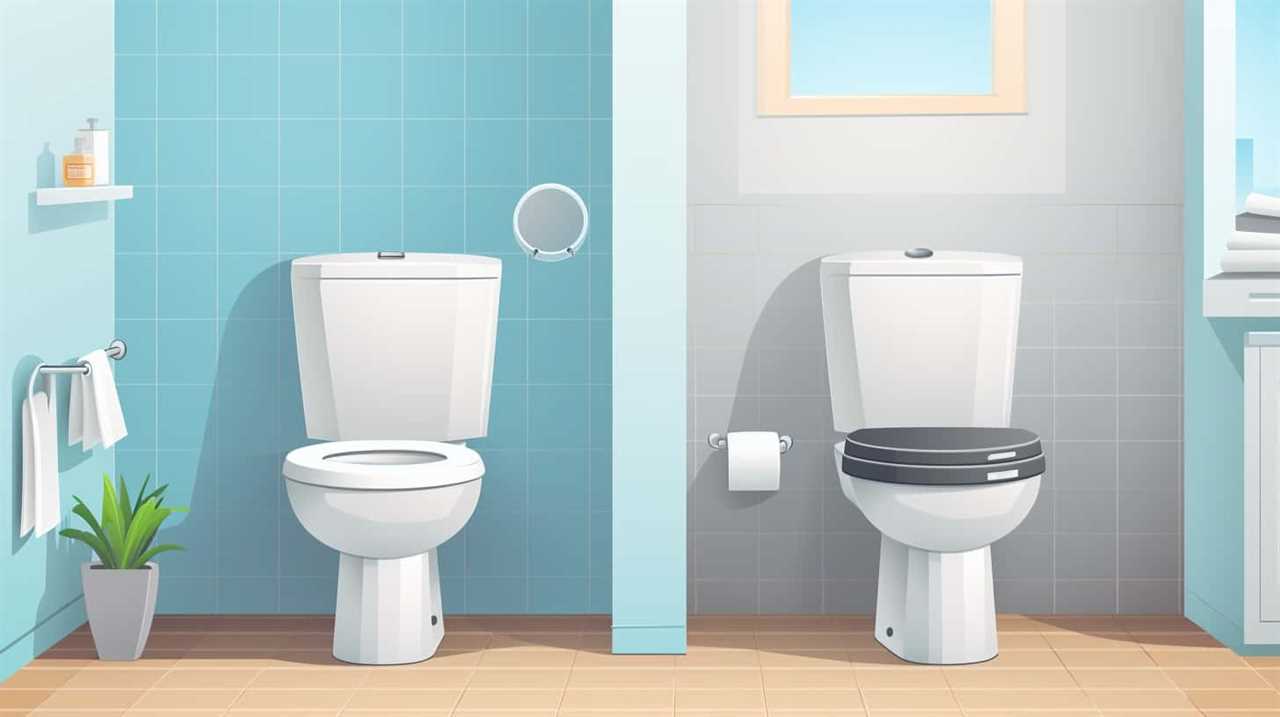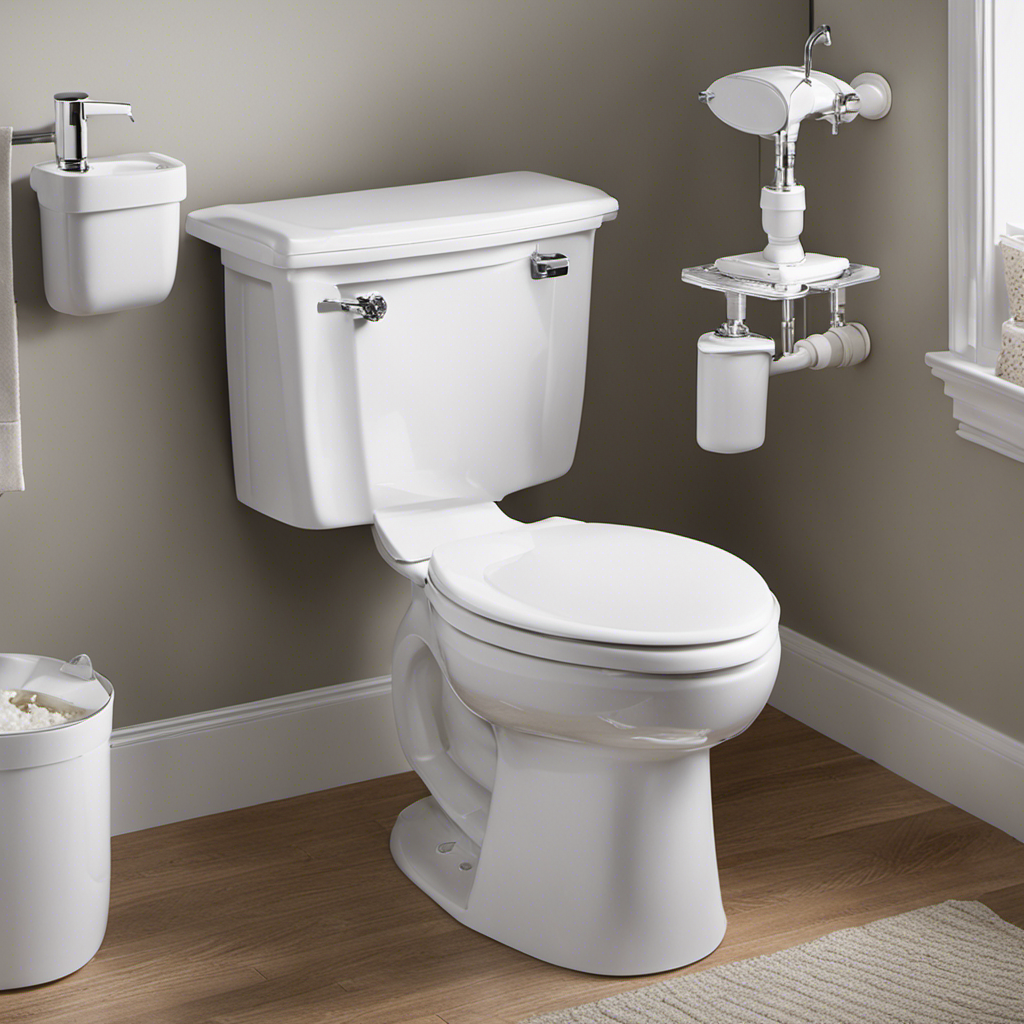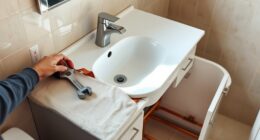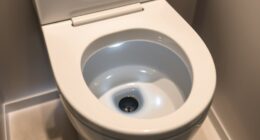Ever been in a bind where the water’s cut off and you urgently need the bathroom? It’s an aggravating scenario, to be sure. However, worry no more! We’re here to illuminate this frequent dilemma.
In this article, we will explore if it’s possible to flush a toilet without water, and delve into alternative methods for flushing. So, let’s dive in and discover the solutions to this pressing issue.
Key Takeaways
- Understanding the water shut-off process and locating the main shut-off valve is crucial to minimizing the impact of water outages.
- During water outages, flushing toilets becomes impossible with the traditional flushing mechanism that relies on water.
- Alternative methods for flushing toilets include using a bucket of water, gravity flush, portable camping toilets, waterless toilets, and composting toilets.
- Potential plumbing issues during water outages include clogged pipes, lack of water pressure for effective flushing, and the need for water conservation.
Understanding the Water Shut-Off Process
How do we effectively shut off the water supply?
Understanding the water shut-off process is crucial in managing water outages and minimizing their impact. When faced with a water outage, it’s essential to locate the main water shut-off valve, typically found near the water meter or at the point where the main water supply enters the building.
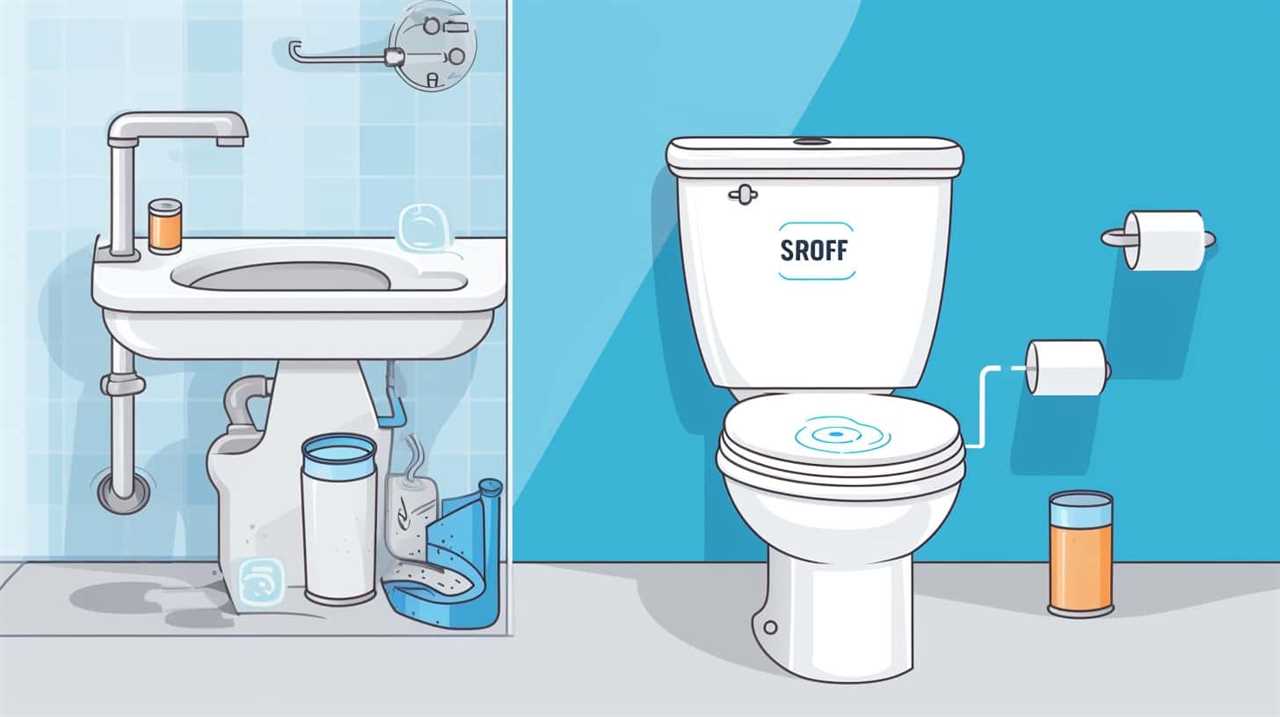
To shut off the water, turn the valve clockwise until it’s fully closed. This action will stop the flow of water throughout the entire system, preventing any further damage or waste.
It’s essential to familiarize yourself with the shut-off process and ensure that all occupants of a building know its location. By doing so, you can quickly respond to water outages and minimize their impact.
The Impact of a Water Outage on Flushing Toilets
When there’s a water outage, flushing toilets becomes impossible as there’s no water to facilitate the process. In such situations, it’s important to be aware of alternative flushing methods, such as using a bucket of water or a portable camping toilet.
However, it’s crucial to note that relying on these methods for an extended period of time can lead to potential plumbing issues, such as clogging or damage to the toilet system.

No Water, No Flush
During a water outage, our ability to flush toilets is severely impacted. Without water, the traditional flushing mechanism can’t function. However, there are alternative flushing methods and emergency toilet solutions that can help alleviate this issue. Here are three options to consider:
- Bucket Flush: Fill a bucket with water from another source, such as a nearby pond or swimming pool, and pour it directly into the toilet bowl. This will create enough force to flush the waste away.
- Gravity Flush: If you live in a multi-story building, you can try pouring a large container of water down the toilet bowl from an elevated position. The force of gravity will help push the waste through the pipes.
- Portable Camping Toilets: Consider investing in a portable camping toilet that doesn’t require a water connection. These toilets have built-in waste storage tanks and can be emptied at a later time.
Alternative Flushing Methods
To manage the impact of a water outage on flushing toilets, we can utilize alternative flushing methods and emergency toilet solutions.
When faced with a water outage, traditional toilets that rely on water to flush are rendered ineffective. However, there are alternative options available, such as waterless toilets and composting toilets.
Waterless toilets, also known as dry toilets, don’t require any water for flushing. Instead, they use a system that separates liquid and solid waste, eliminating the need for water to carry away waste.
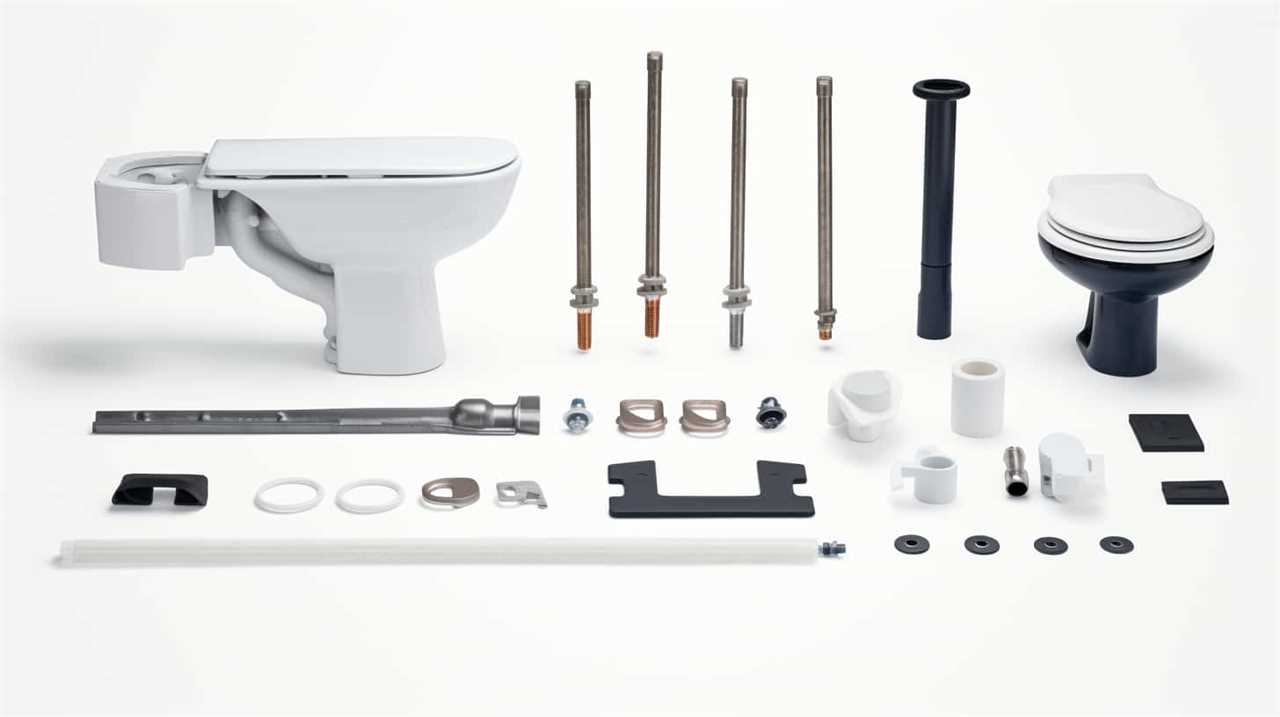
Composting toilets, on the other hand, utilize a composting process to break down waste into nutrient-rich compost. These toilets require minimal water or no water at all, making them a practical solution during water outages.
Potential Plumbing Issues
We encountered several plumbing issues during the water outage that greatly affected our ability to flush toilets.
Here are the potential plumbing issues you may face during a water outage:
- Clogged pipes: Without water flow, waste can accumulate in the pipes, leading to blockages and preventing proper flushing.
- Lack of water pressure: Flushing toilets rely on water pressure to create a strong enough force to remove waste. During a water outage, the lack of pressure can make flushing difficult or ineffective.
- Limited water supply: If you have a limited water supply during the outage, you may need to conserve water for essential purposes. This means you may not have enough water to flush toilets regularly.
To combat these issues, consider water-saving toilet options like dual-flush toilets or low-flow toilets. Additionally, you can explore emergency toilet solutions such as portable toilets or composting toilets.

Is It Possible to Flush a Toilet Without Water
When faced with a water outage, it’s important to know alternative methods for flushing a toilet.
One option is to use a bucket of water to manually pour into the bowl, simulating a flush.
Another solution is to consider installing a water-saving toilet that uses less water per flush.
In emergency situations, portable toilets or composting toilets can be utilized as temporary alternatives.
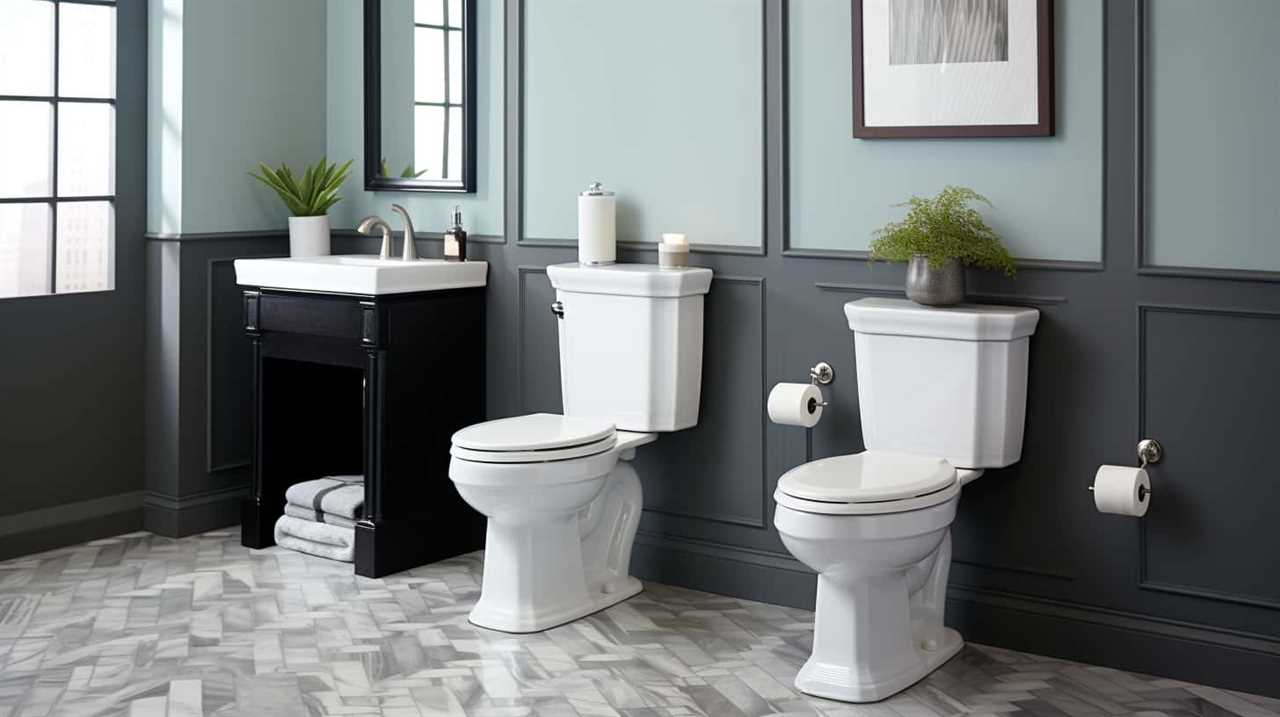
Alternative Flushing Methods
One possible alternative method for flushing a toilet without water is using a bucket of water. This method involves pouring the water directly into the toilet bowl to create enough force to push waste down the drain.
Here are three additional alternative flushing methods that can be used when there’s no water available:
- Gravity Flush: This method relies on the force of gravity to remove waste from the toilet bowl. By pouring a large container of water quickly into the bowl, the sudden rush of water can create enough pressure to flush the waste away.
- Vacuum Flush: Some waterless toilets, such as vacuum flush toilets, use a vacuum system to remove waste. These toilets have a built-in vacuum pump that creates suction to remove waste from the bowl.
- Composting Toilets: Composting toilets are a waterless alternative that uses natural processes to break down waste into compost. These toilets separate liquid and solid waste, allowing the solid waste to decompose over time.
Water-Saving Toilet Options
How can toilets be flushed without water? When it comes to water-saving toilet options, there are a few alternatives to consider. One popular option is water-efficient toilets, which are designed to use less water per flush compared to traditional toilets. These toilets typically have a smaller tank and use innovative flushing mechanisms to minimize water usage. Another option is dual flush toilets, which give users the choice of a full flush for solid waste or a reduced flush for liquid waste. This dual flush system allows for significant water savings, as less water is used for lighter tasks. Both water-efficient toilets and dual flush toilets are great options for those looking to conserve water while still maintaining the functionality of a traditional toilet.
| Water-Saving Toilet Options |
|---|
| Water-efficient toilets |
| Dual flush toilets |
Emergency Toilet Solutions
As we continue our exploration of water-saving toilet options, let’s now delve into the topic of emergency toilet solutions and whether it’s possible to flush a toilet without water. In situations where the water supply is cut off or unavailable, improvising toilet solutions becomes crucial. Here are three emergency toilet alternatives:
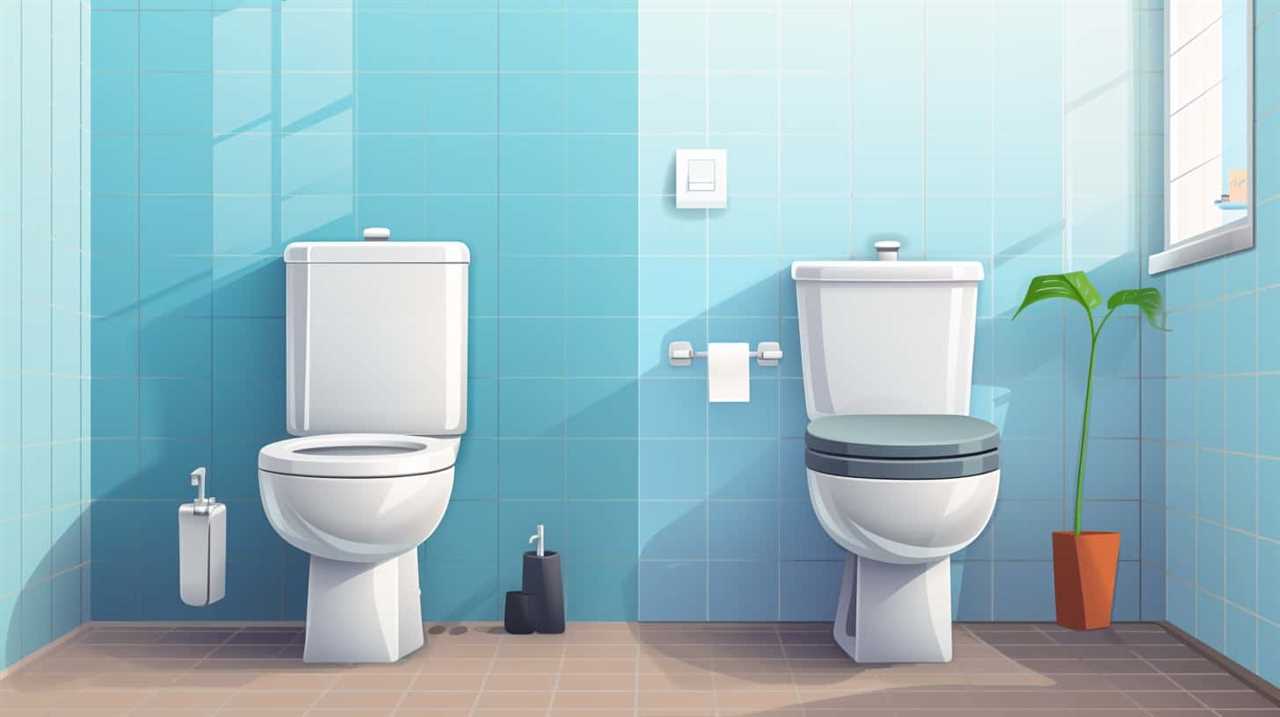
- Bucket Flush: Fill a large bucket with water and pour it directly into the toilet bowl. The force of the water should be enough to flush waste down the drain.
- Trash Bag Method: Line a sturdy trash bag with newspaper or other absorbent material. Place the bag inside the toilet bowl and secure it. After use, carefully remove and dispose of the bag.
- Composting Toilet: Consider investing in a composting toilet system that uses natural processes to break down waste without the need for water.
While these emergency solutions may not provide the same level of convenience as a regular flush, they can help maintain sanitation during water shortages or emergencies.
Exploring Alternative Flushing Methods
We can explore alternative flushing methods when the water is off. In situations where there’s no water supply, it’s important to have backup options to maintain proper hygiene.
One alternative flushing method is to use a bucket of water. Simply pour the water into the toilet bowl with enough force to create a flushing effect.
Another option is to use a portable camping toilet or a composting toilet. These alternative toilets don’t require water for flushing and can be a great solution in emergencies or for those looking for water-saving toilet options.
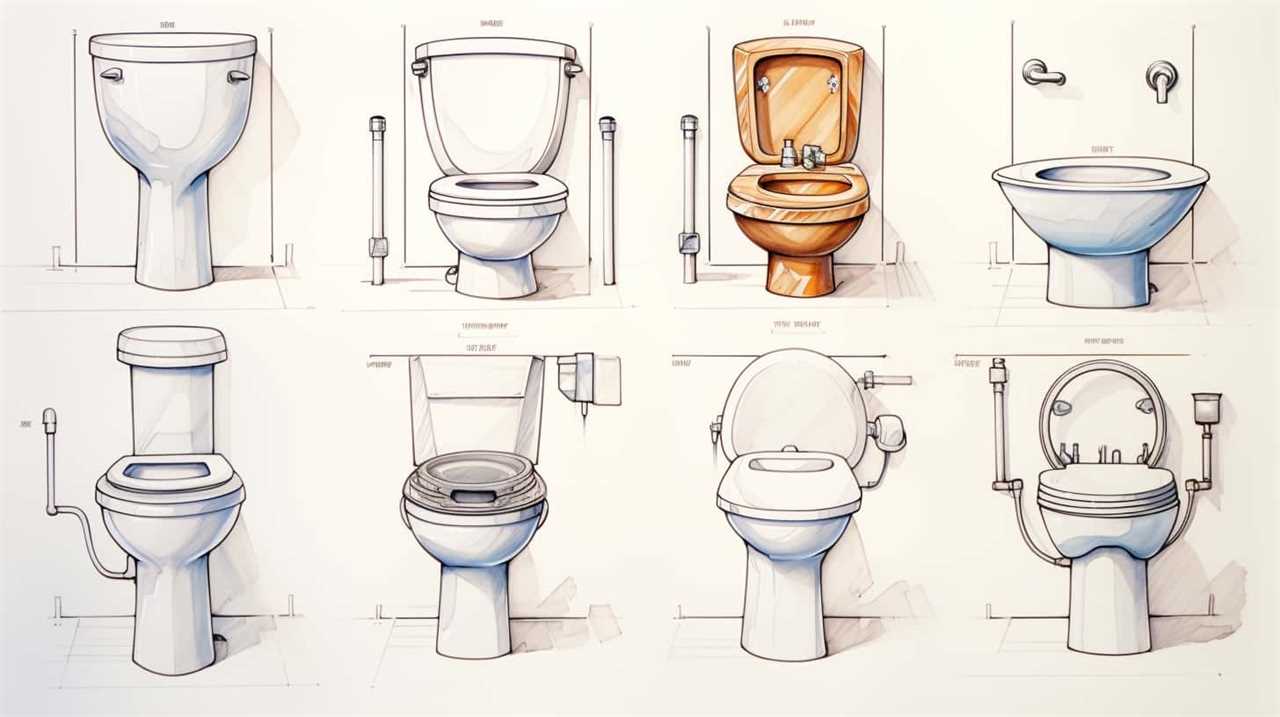
Additionally, installing a dual-flush toilet or a low-flow toilet can help conserve water in everyday use. These options allow for different amounts of water to be used for liquid waste versus solid waste, reducing overall water consumption.
Exploring these alternative flushing methods can help us be prepared and environmentally conscious.
Using a Bucket of Water to Flush the Toilet
When the water is off and you need to flush the toilet, using a bucket of water can be a water-saving alternative method. It involves pouring a bucket of water directly into the bowl to create enough force to flush the waste down the drain. This method is practical and efficient, especially in emergency situations or during water shortages.
However, it’s important to note that using a bucket of water may not be as effective as a regular flush, and there are potential drawbacks and risks to consider, such as splashing or overflow if not done correctly.
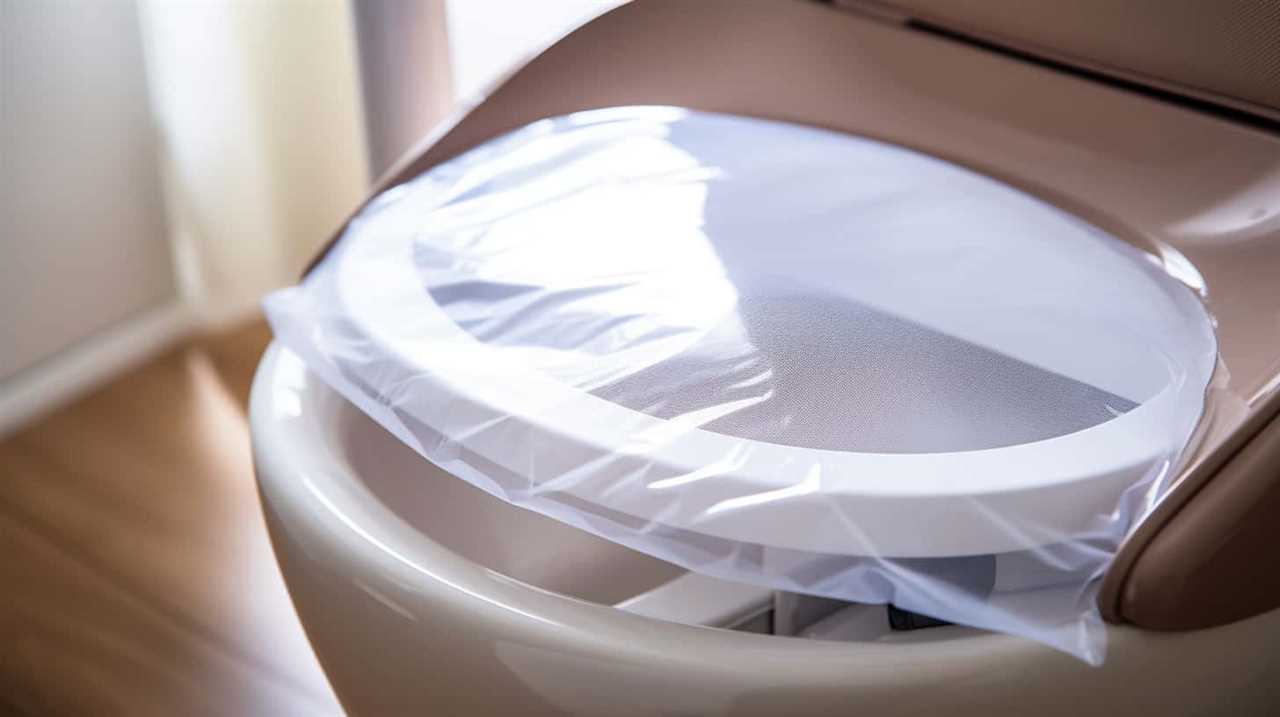
Water-Saving Alternative Method
To flush the toilet when the water is off, one can utilize a bucket of water as a water-saving alternative method. This eco-friendly solution is a simple yet effective way to maintain basic hygiene and functionality of the toilet.
Here are three key steps to follow when using a bucket of water to flush the toilet:
- Fill a bucket with water: Use a container with a capacity of about 2-3 gallons to ensure sufficient water for flushing.
- Pour the water into the toilet bowl: Lift the toilet seat and pour the water directly into the bowl, aiming for the center to create enough force for a thorough flush.
- Repeat if necessary: If the initial flush isn’t enough, repeat the process until the toilet is adequately flushed.
Using a bucket of water to flush the toilet is a water-efficient solution that helps conserve water and reduces the strain on water resources. However, it’s important to consider the practicality and efficiency of this method, which will be discussed in the subsequent section.
Practicality and Efficiency
Continuing the discussion from the previous subtopic, using a bucket of water as a water-saving alternative method to flush the toilet proves to be a practical and efficient solution.
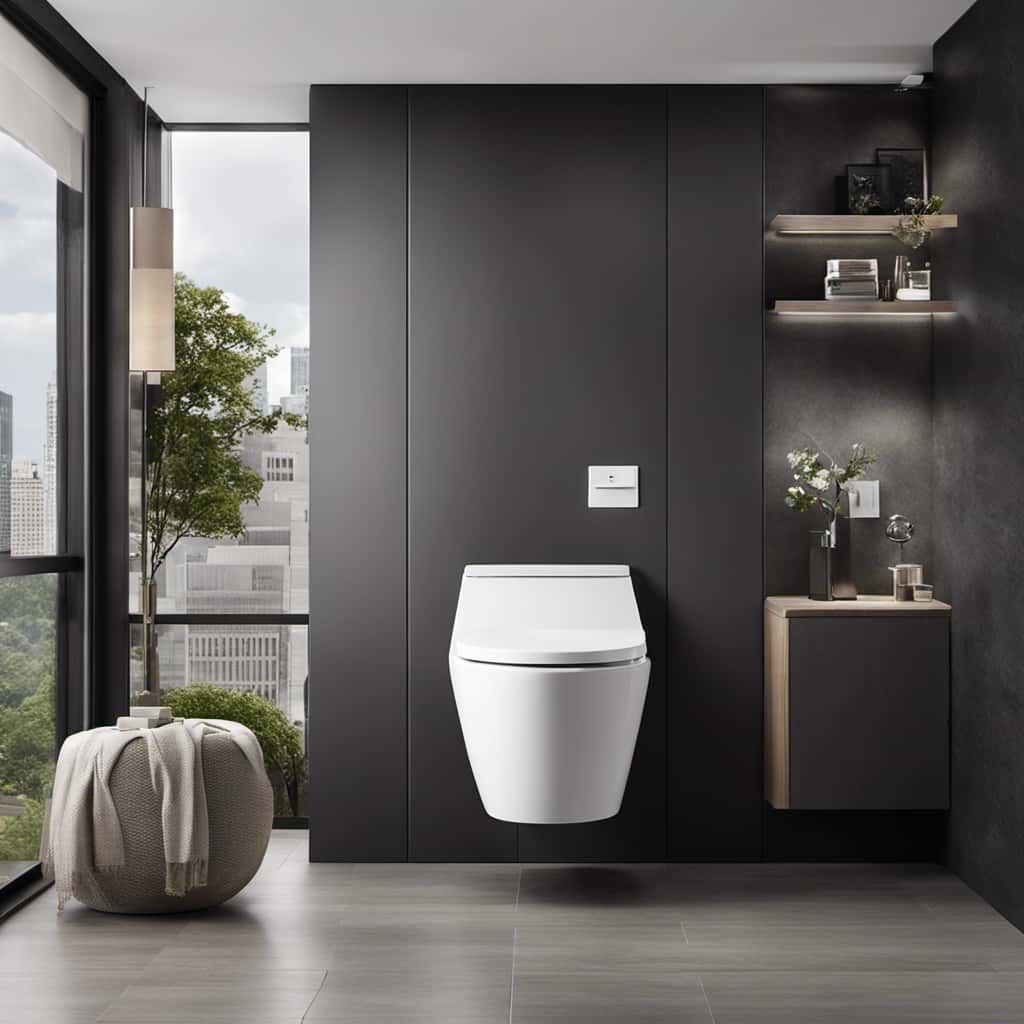
When the water supply is cut off, having a bucket of water readily available enables us to manually flush the toilet. This method is practical because it requires minimal effort and resources.
By pouring the water into the toilet bowl, we can create enough force to flush away waste. Additionally, using a bucket of water is an efficient alternative as it allows us to conserve water during a water shortage.
Compared to traditional flushing methods, which consume several gallons of water per flush, using a bucket only requires a small amount of water. This makes it an effective and efficient solution for maintaining hygiene and conserving water in situations where the water supply is limited or unavailable.
Potential Drawbacks and Risks?
Despite its practicality and efficiency, using a bucket of water to flush the toilet does come with potential drawbacks and risks. It’s important to be aware of these potential consequences and health risks before opting for this method. Here are three potential drawbacks and risks to consider:
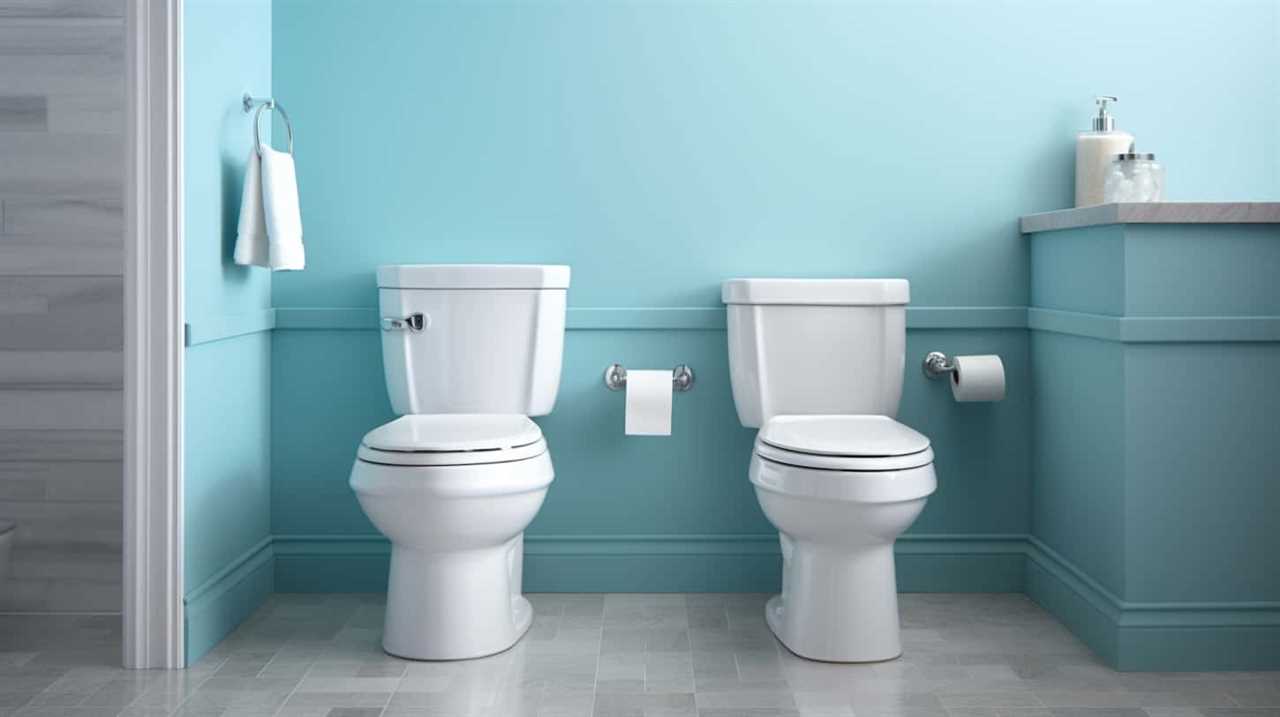
- Inadequate flushing: Using a bucket of water may not provide enough force to clear the toilet bowl effectively. This could result in clogs and the need for additional cleaning.
- Contamination: If the water used for flushing isn’t clean or properly sanitized, it can introduce harmful bacteria and pathogens into the toilet bowl, increasing the risk of illness.
- Hygiene concerns: Handling a bucket of water and pouring it into the toilet can be messy and unhygienic. It may also lead to splashing and the spread of germs.
Considering these potential drawbacks and risks, it’s essential to explore alternative methods, such as utilizing a portable water source for flushing, which will be discussed in the next section.
Utilizing a Portable Water Source for Flushing
We can use a bucket as a portable water source for flushing the toilet when the water is off. This is a practical solution that allows us to conserve water while still maintaining hygiene. By using a portable water container, such as a bucket, we can manually pour water into the toilet bowl to create the necessary force for flushing. It is important to note that this method requires us to use the minimum amount of water needed to achieve a proper flush, as water conservation is key. Here is a table outlining the steps for utilizing a bucket as a portable water source for flushing:
| Steps for Utilizing a Bucket as a Portable Water Source for Flushing | |||
|---|---|---|---|
| 1. Fill a bucket with water | 2. Position the bucket near the toilet | 3. Pour the water into the toilet bowl with force | 4. Repeat if necessary until the toilet is properly flushed |
Understanding the Limitations of Alternative Flushing Methods
When it comes to flushing the toilet without water, it’s important to understand the limitations of alternative methods.
While there are a few options available, such as using a bucket of water or pouring water directly into the bowl, these methods may not always be effective.

Factors like the gravity flow and the amount of water used can impact the success of alternative flushing methods.
No Water, No Flush
During periods of water outage, our ability to flush toilets is limited due to the absence of water. However, there are alternative flushing methods and emergency toilet solutions that can be employed in such situations. Understanding these options can help ensure proper sanitation even when the water supply is disrupted.
Here are three alternative flushing methods to consider:
- Bucket Flushing: Fill a bucket with water from an alternative source, such as a swimming pool or rainwater collection system, and pour it directly into the toilet bowl to initiate a flush.
- Gravity Flush: If the water supply is expected to resume shortly, you can manually pour water into the toilet tank, allowing gravity to create a flush when the handle is activated.
- Portable Toilet: In extreme cases, using a portable toilet with a waste collection bag can be a temporary solution until the water supply is restored.
While these methods may not provide the same convenience as a regular flush, they can help maintain basic hygiene during water outages.

Alternative Flushing Options
Although alternative flushing methods can be used during water outages, it’s important to understand the limitations of these options.
One common alternative method is bucket flushing, which involves manually pouring water into the toilet bowl to create enough force to flush the waste. However, bucket flushing isn’t as effective as traditional flushing because it lacks the same amount of water pressure. It may require multiple attempts and larger quantities of water to achieve a complete flush.
Another option to consider is the use of composting toilets. These toilets use a natural process to break down waste into compost, eliminating the need for water flushing altogether. Composting toilets are an eco-friendly and water-saving alternative, but they require regular maintenance and proper management to ensure proper decomposition and odor control.
Understanding the limitations of these alternative flushing methods can help you make an informed decision during water outages.

Preparing for a Water Outage With Emergency Supplies
To prepare for a water outage, we should stock up on emergency supplies. Here are three essential items to have on hand:
- Emergency Water Supply: It’s crucial to have an ample amount of water stored in case of a water outage. The general recommendation is to have at least one gallon of water per person per day for drinking and sanitation purposes. Consider storing water in clean, food-grade containers and rotating it every six months to ensure freshness.
- Toilet Flushing Alternatives: When the water is off, traditional flushing methods won’t work. To avoid unsanitary conditions, it’s advisable to have alternative options available. Portable camping toilets, composting toilets, or even a simple emergency toilet seat can be used as substitutes.
- Hygiene and Sanitation Supplies: Maintaining good hygiene during a water outage is essential. Stock up on items like hand sanitizers, wet wipes, antibacterial soaps, and garbage bags for waste disposal. Additionally, having disposable plates, utensils, and paper towels can help minimize water usage for cleaning.
How to Properly Store Water for Emergency Situations
We can properly store water for emergency situations by following these simple steps.
First, choose containers that are specifically designed for storing water, such as food-grade plastic bottles or water storage tanks. Ensure that these containers are clean and free from any contaminants.
Next, fill the containers with tap water, leaving some space at the top to allow for expansion when freezing. It’s recommended to store at least one gallon of water per person per day for a minimum of three days.

Keep the water in a cool, dark place, away from direct sunlight. Periodically check the containers for any signs of damage or leakage.
Finally, rotate the water every six months to ensure freshness.
Tips for Conserving Water During a Water Outage
One effective way to conserve water during a water outage is by implementing a few simple measures. Here are three tips for water conservation during a water outage:
- Limit flushing: Only flush the toilet when absolutely necessary. You can use the ‘if it’s yellow, let it mellow; if it’s brown, flush it down’ rule to reduce unnecessary flushing.
- Collect and reuse water: Place a bucket in the shower to collect water while waiting for it to warm up. This water can then be used for flushing toilets or watering plants.
- Minimize water usage: Use wet wipes or hand sanitizers instead of water for cleaning hands. Additionally, take shorter showers and turn off the tap while brushing teeth or washing dishes.
Implementing these measures won’t only help conserve water during a water outage but also contribute to emergency preparedness. By being mindful of our water usage, we can ensure we’ve enough water for essential needs during an outage.
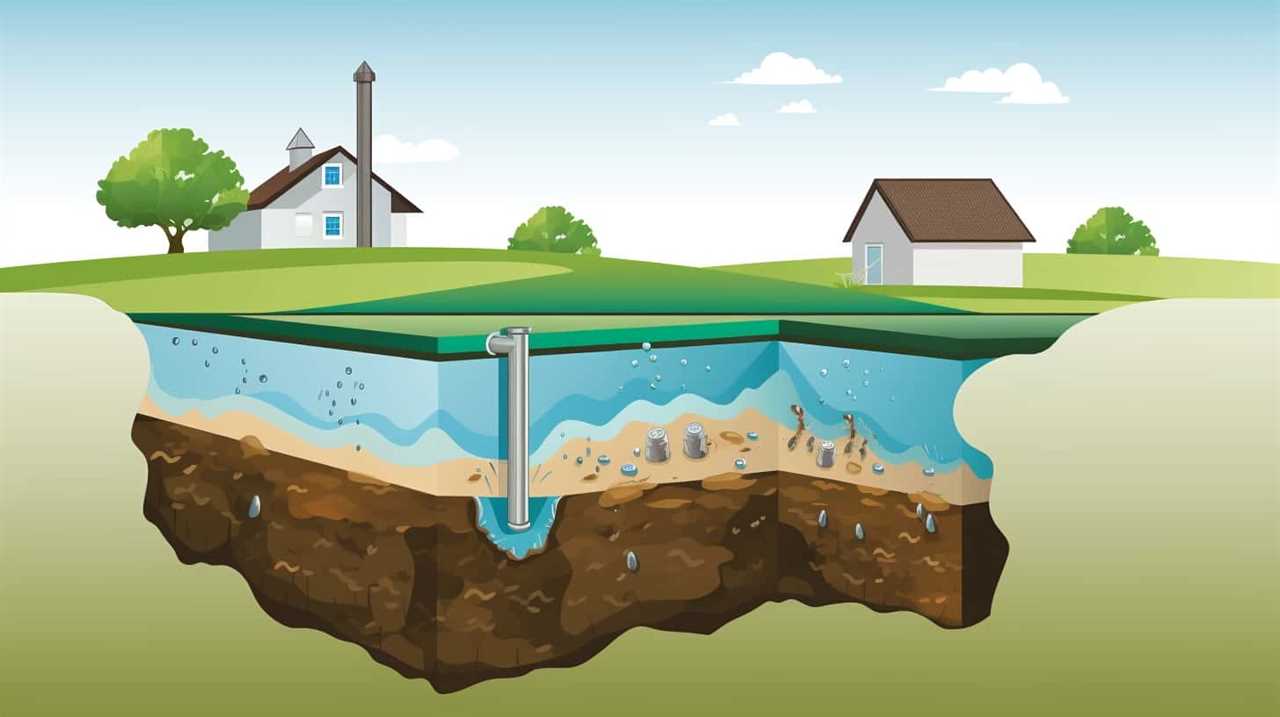
Now, let’s explore the importance of regular toilet maintenance.
The Importance of Regular Toilet Maintenance
Regularly maintaining your toilet is an essential task that we should frequently prioritize to ensure its proper functioning. Neglecting toilet maintenance can lead to costly repairs and inconveniences. To help you keep your toilet in top shape, here are some important toilet maintenance tips:
| Maintenance Task | Frequency | Purpose |
|---|---|---|
| Check for Leaks | Monthly | Prevent water waste and potential damage |
| Clean the Bowl | Weekly | Remove stains and prevent buildup |
| Inspect the Flapper | Annually | Ensure proper sealing and prevent leaks |
| Replace Worn Parts | As needed | Maintain optimal flushing and water flow |
Troubleshooting Common Toilet Flushing Issues
To properly troubleshoot common toilet flushing issues, it’s important to understand the potential causes and solutions for these problems. Here are three common issues and their troubleshooting techniques:
- Weak flush: If your toilet isn’t flushing with enough force, it may be due to a clogged trapway or a partially closed water supply valve. Try using a plunger or a toilet auger to remove any obstructions. Ensure that the water supply valve is fully open to allow maximum water flow.
- Running toilet: A running toilet can waste a significant amount of water. This issue is often caused by a faulty flapper or a malfunctioning fill valve. Check the flapper for any damage or misalignment and replace it if necessary. Adjust or replace the fill valve to stop water from continuously flowing into the tank.
- Phantom flush: Sometimes, you may hear your toilet flushing on its own. This is likely due to a leaky flapper that’s allowing water to slowly drain from the tank into the bowl. Replace the flapper to resolve this issue.
By understanding these troubleshooting techniques, you can effectively address common toilet flushing issues and ensure a properly functioning toilet.
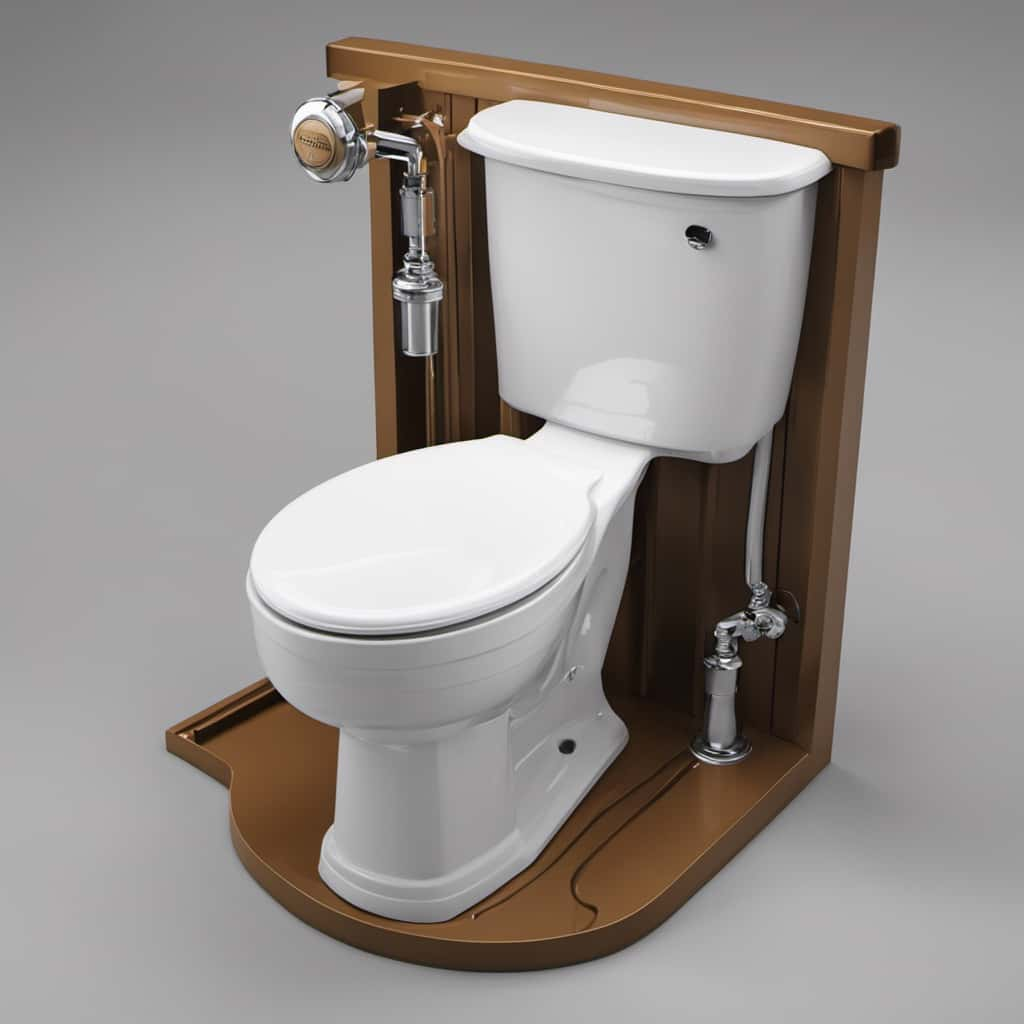
Now, let’s explore how to maintain a functioning toilet during a water outage.
Maintaining a Functioning Toilet During a Water Outage
During a water outage, we need to find alternative methods to ensure our toilet remains functional. Understanding water scarcity and the importance of sanitation, it is crucial to maintain proper hygiene even in such situations. Here are some ways to maintain a functioning toilet during a water outage:
| Alternative Method | Description |
|---|---|
| Bucket Flushing | Fill a bucket with water and pour it directly into the toilet bowl, using the force of the water to simulate a flush. |
| Portable Toilet | Consider using a portable toilet or camping toilet, which can be set up in a separate area and used as an alternative until water service is restored. |
| Chemical Toilet | Chemical toilets use special chemicals to break down waste and neutralize odors, making them a viable option during a water outage. |
Other Considerations During a Water Outage
As we navigate through a water outage, it’s important to consider other factors that may impact our daily routine. In addition to maintaining a functioning toilet, there are a few other things to keep in mind. Here are some key considerations:
- Exploring water conservation: During a water outage, it’s crucial to conserve water as much as possible. This includes reducing the length of showers, minimizing dishwashing, and avoiding unnecessary water usage.
- Emergency water storage: It’s wise to have a supply of emergency water stored in advance. This can be in the form of bottled water or filling up containers with tap water before the outage. It’s recommended to have at least one gallon of water per person per day for drinking and sanitation purposes.
- Hygiene practices: Without access to running water, maintaining good hygiene can be challenging. It’s important to use hand sanitizers and wet wipes as alternatives. Additionally, consider stockpiling necessary hygiene products in advance.
By taking these factors into account, we can better navigate through a water outage and ensure our daily routine isn’t severely disrupted.

Conclusion: Being Prepared for Unexpected Water Outages
By considering these factors, we can ensure that we’re well-prepared for unexpected water outages and minimize the disruption to our daily lives.
One important aspect of being prepared for water outages is to have alternative water-saving methods in place. This can include storing water in containers or installing rainwater harvesting systems.
It’s also crucial to have emergency toilet solutions available. Portable camping toilets or chemical toilets can be used temporarily when the water is off. Additionally, composting toilets are an eco-friendly and sustainable long-term solution. These toilets convert human waste into compost that can be used as fertilizer.
Conclusion
In conclusion, it’s essential to be prepared for unexpected water outages. Just like a ship needs a sturdy anchor, having alternative flushing methods and troubleshooting knowledge can help keep your toilet functioning during these situations.
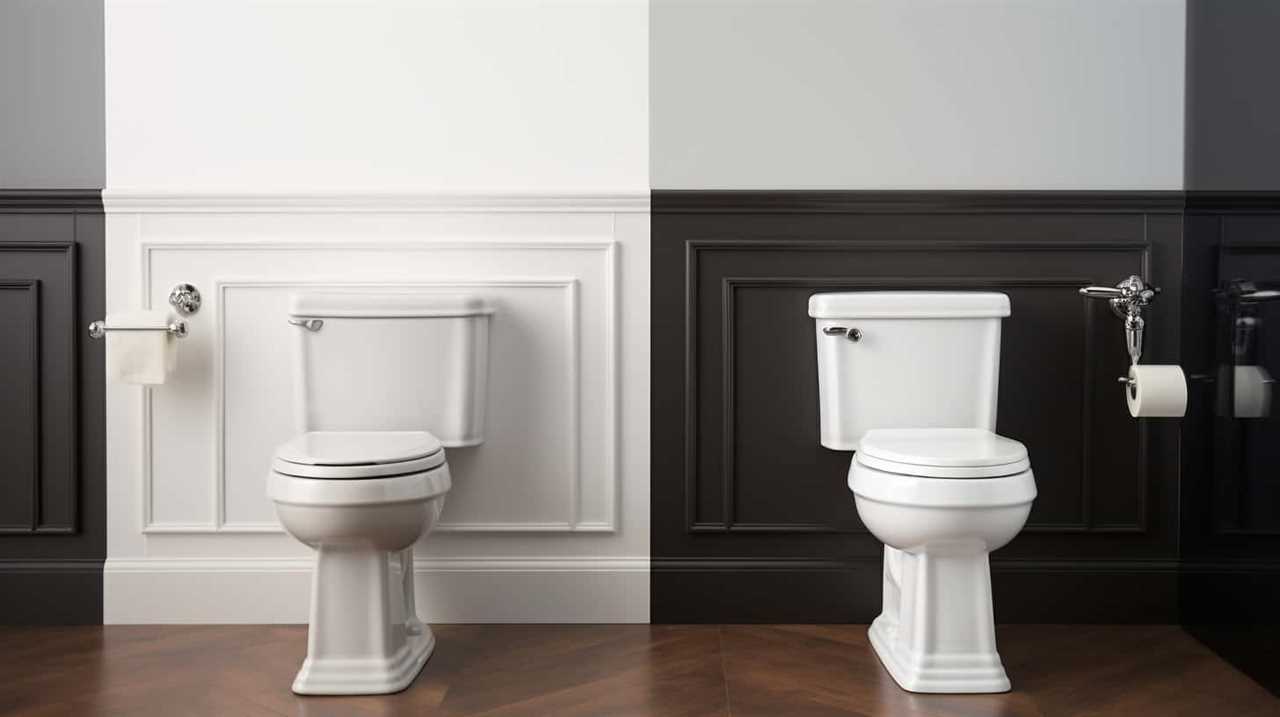
By using a bucket of water or exploring other flushing options, you can overcome the challenges of a water outage.
Remember, being ready for these situations is like having a life jacket on a stormy sea – it ensures your comfort and peace of mind.
